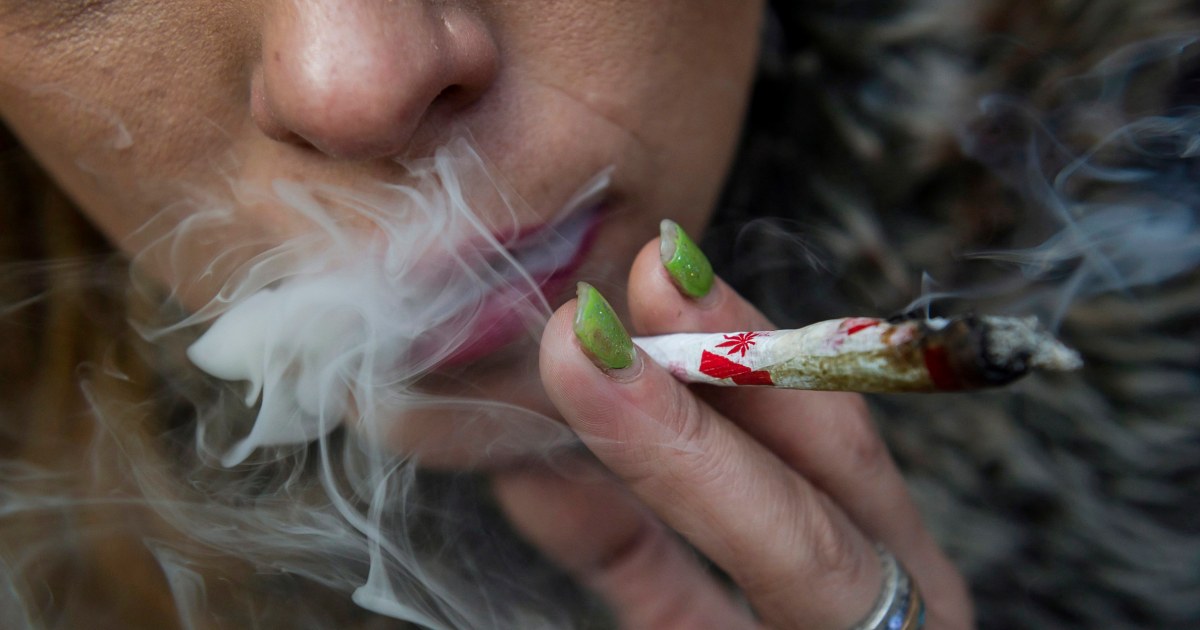
As marijuana use in the United States reaches record highs among young adults, there is a growing need to address its potential for addiction, experts say.
An experimental pill, the first in a new class of drugs, has shown promise in treating cannabis use disorder, according to the results of a small trial published Thursday in Nature Medicine.
The drug, known as AEF-0117, was found to reduce the perceived “good effects” of cannabis by up to 38 percent in a double-blind randomized controlled phase 2a trial led by researchers at Columbia University. Phase 2a typically means researchers are determining the proper dosage for the next stage of testing.
Meg Haney, the lead author of the study and director of the cannabis research laboratory at Columbia University, described the preliminary findings on the medication as “very encouraging.”
No drugs have yet been approved by the Food and Drug Administration to treat cannabis use disorder, which is estimated to affect up to 30 percent of marijuana users, according to the Centers for Disease Control and Prevention.
Cannabis use disorder is diagnosed as the inability to stop using marijuana, even when it causes significant disruptions to daily life, such as interfering with relationships or work.
An estimated 14 million Americans struggled with cannabis use disorder in 2021, according to a report by the Substance Abuse and Mental Health Services Administration.
“This is one of the very few medications that I’ve tested to directly decrease the effects of cannabis,” Haney said. “The question I asked was, can I change the way it makes people feel and, therefore, help them to abstain from cannabis?”
The drug was studied in 29 adult men and women diagnosed with cannabis use disorder. They were smoking on average roughly 3 grams of marijuana a day, six days a week.
The doses of the drug studied were a low dose of 0.06 milligrams (mg) and a higher dose of 1 milligram.
Participants started the trial by either receiving the drug first or a placebo for five days. They took the drug at 9 a.m. each day and smoked a controlled amount of cannabis 3.5 hours later.
They were then asked questions, like “I feel high” or “I feel a good effect” five times — from 20 minutes after smoking to two hours after smoking.
The lower dose reduced the subjective “good effects” of cannabis by 19 percent, while the higher dose managed to reduce it by 38 percent.
Only the higher dose was able to significantly reduce the amount of cannabis that the participants ultimately used later in the day.
There were no significant side effects and the drug didn’t cause withdrawal.
The findings of the small trial will need to be confirmed in larger trials that are well underway, said Haney, as roughly 300 patients are being enrolled in a phase 2b trial across the country. Results are expected as soon as next year.
How cannabis affects the brain
The drug is unique in the specific way it targets the brain, Haney said.
Cannabis primarily exerts its effects on the brain via its psychoactive compound tetrahydrocannabinol, or THC, which binds to a receptor in the brain called CB1.
“This particular compound is able to only block certain actions of the receptor,” said Dr. Scott Hadland, an addiction specialist at Mass General Hospital for Children in Boston. “That way you’re able to block the euphoric effects of cannabis without causing these adverse side effects.”
Ultimately, Hadland, who was not involved in the study, said that this drug will work best in patients who are motivated to quit.
“We have to remember that this is a medication that, because it’s blocking the rewarding effects of cannabis, patients will have to actually want to take it,” he said. “We’ll need motivated patients who are looking to stop their cannabis use to take the medication in order for it to work.”
Potential harms of high potency cannabis
Hadland said that, while many people use marijuana with no issues, he worries there may be a lack of awareness in the public about its potential harms.
“What’s underrecognized in our society, as we’ve expanded access to cannabis, is that some people do have very severe problems from it,” he said.
Hadland said signs of cannabis use disorder in young people can include:
- Struggles in school, such as deteriorating grades.
- Changes in relationships.
- Giving up activities that they used to love, like being part of a sports team or a club at school.
Haney is distressed by the public health challenge raised by more states legalizing recreational use of marijuana for adults.
“There’s no honest discussion of it,” she said. “I think the public is largely unaware of the risks to cannabis use, and it’s just talked about in very glowing terms.”
Hadland, who works with teens and young adults struggling with marijuana addiction in his clinic, says there is a need for effective medications.
“Our care has really been hampered by a lack of medications that are effective for treatment,” he said. “This is different from other substances like opioids, nicotine and alcohol, where we have effective medications.”
Larger studies will be needed to confirm the new findings and learn about any potential side effects of the drug, Hadland said.
David Kroll, a toxicologist and co-director of the cannabis science and medicine education programs at the University of Colorado Skaggs School of Pharmacy, also called the drug promising, but noted that it appears to have been tested on lower potency products than what is often available in the market. (He also was not involved in the study.)
The cannabis puffs tested contained 7 percent THC equating to roughly 67 mg of THC, a dose that is typically a third of what he sees in the joints available in Colorado today.
“The products that are available now are just mind blowing,” he said. “There’s no relation to the cannabis that your parents or grandparents might have smoked.”






